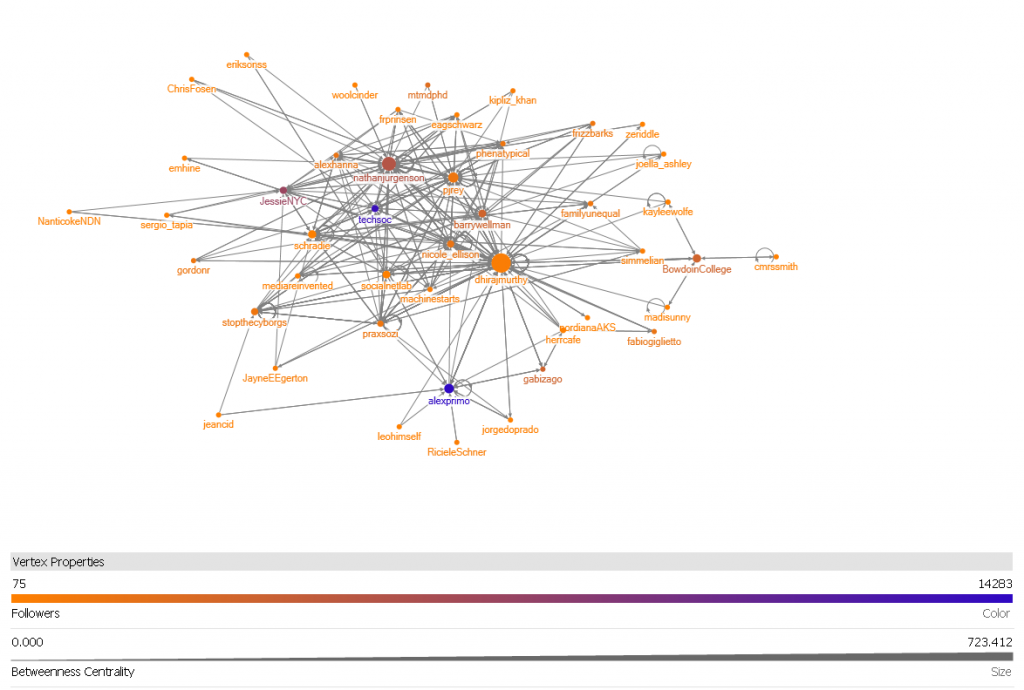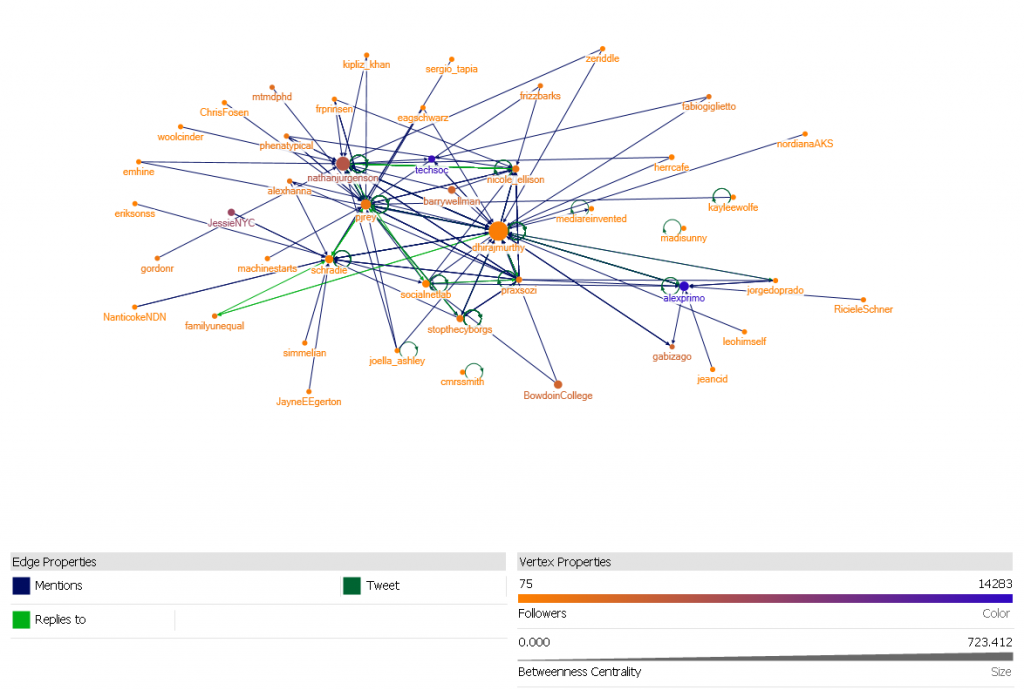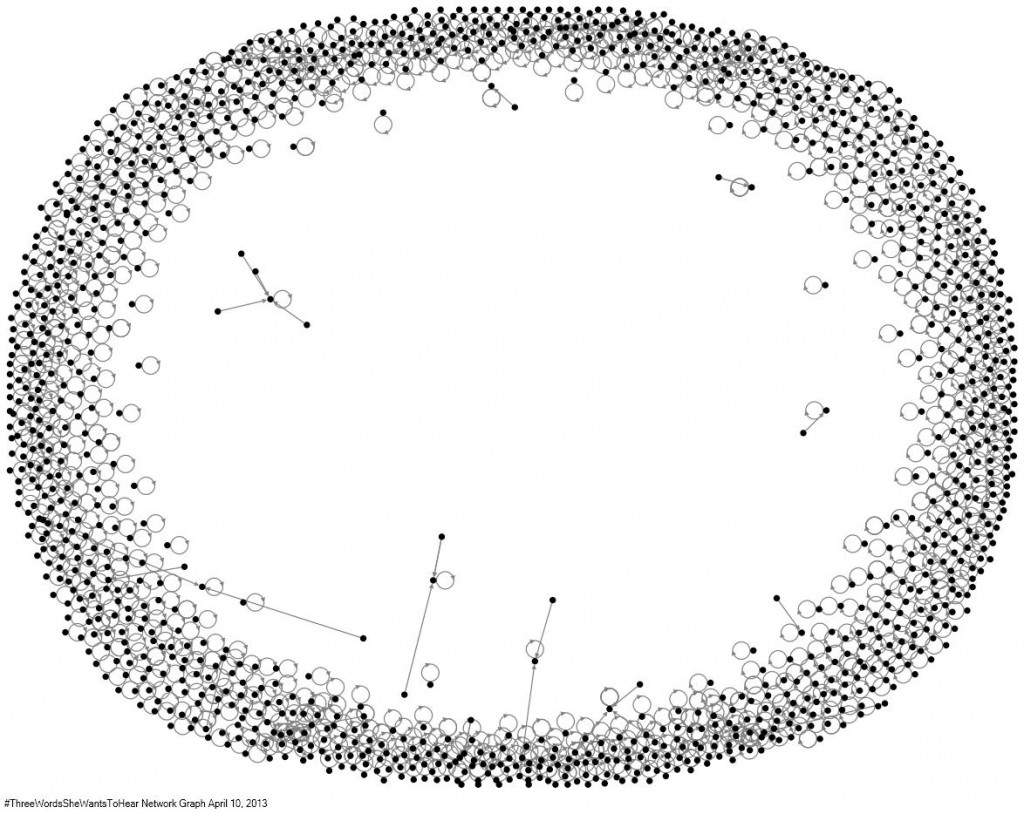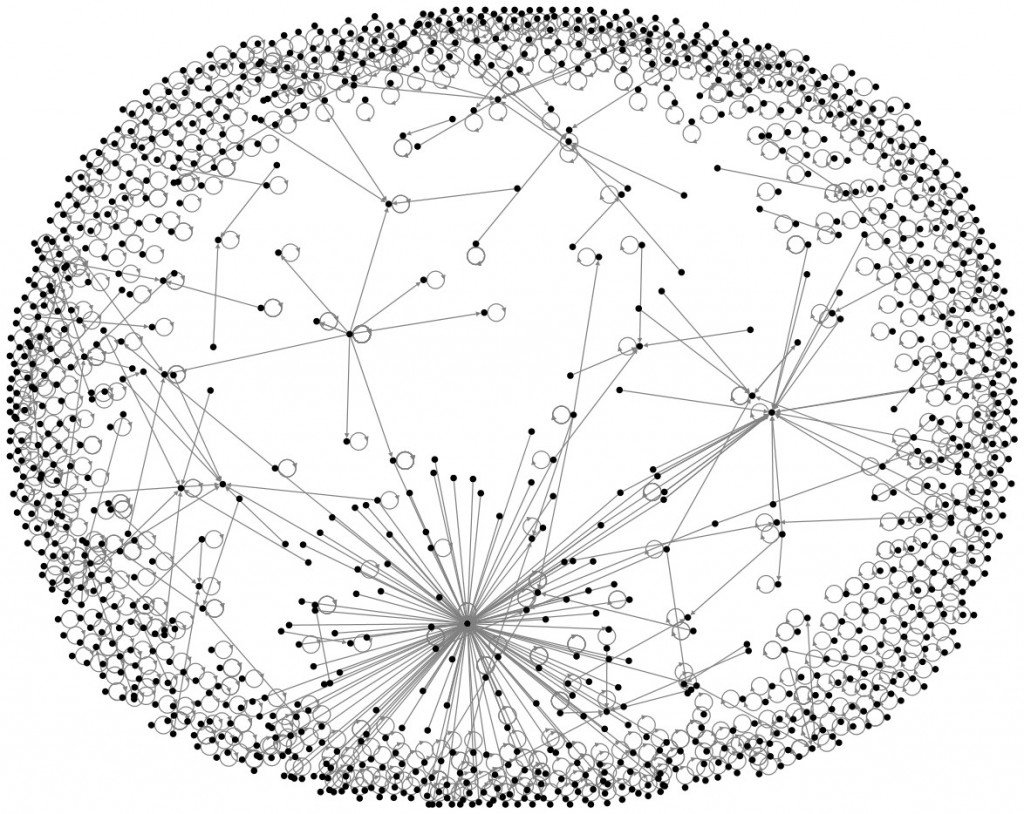Please cite this as: Murthy, D. (2013), “’Hate-watching’ and Twitter”, iSociology, http://www.dhirajmurthy.com/hate-watching-and-twitter
In my Twitter research, I have been exploring ‘social television watching’. There are two key points which come to mind regarding how the rise of social media has impacted our approach to television-viewing generally. First, scholarship on television has seen TV viewing as ‘parasocial’, an unbalanced relationship where television viewers feel ‘intimacy at a distance’ with celebrity actors (MR Levy 1979). In other words, TV viewers perceive an intimate relationship, where they have the illusion that they ‘know’ the celebrity on screen; however, the celebrity knows nothing of the television watcher. The promise, or at least perception, of social media such as Twitter is that this parasociality may be broken down or challenged one @-mention at a time by the likes of Ashton Kutcher. So the impact here is a perceived decrease of parasociality (a decrease in the traditional gap between television viewer and celebrity on the screen).
Additionally, social media, by encouraging television audience members to be quite active, tweeting under #thefollowing or #dexter can form engaged public audiences, which include both fans who know each other and fans who do not. This social TV watching is powered by social media use via mobile smartphones and laptops. Interestingly, an argument can be made that this increases our sociability while engaging in an activity which many have viewed as becoming less and less social (in juxtaposition to historical TV watching as a family or other group).
Hate-watching has been a part of television since its inception. It’s not that Twitter and other social media encourage hate watching per se, but that social media make it easier to publicly hate-watch. In other words, shows like Single Ladies or Toddlers & Tiaras would have had hate-watchers with or without social media. It is not only the publicness of hate watching that has changed, but also that it is real time, global, and not limited to one’s living room or to a single telephone call. What social media does is enable a ‘networked public’ (see ‘Networked’ by Barry Wellman) to hate-watch together. Additionally, after Emily Nussbaum’s 2012 New Yorker piece, ‘Hate-Watching “Smash”‘, Twitter has seen many incidents of people tweeting under #hatewatching and similar hash tags shows that are the top of their hate-watch list. Twitter can ultimately egg people on to hate watch (especially during the network broadcast of a show or in the immediate days after the show is aired).
As mentioned above, social media creates new social communities and formations. Often, these are focused around particular events (something I discuss in my book). In the case of television, these events are particular TV shows. Events encourage social responses. My view is that hate-watching is not more popular today per se. Rather, it is the way in which we hate-watch that has changed. Melrose Place in the 90s comes to mind here! Though by no means the same as hate-watching, the best term to describe similar historical processes of this type of television watching is ‘guilty pleasure’. An Associated Press article in 2002 refers to Jerry Springer shows in this vein.
What is different, and why we may perceive hate-watching to be more popular today, is that Twitter makes it very easy to publicly broadcast your hate-watching. Not only that, but the social engagement of rapid @-mentions between hate-watchers leads us to think it is on the rise. Not only is it very public and in your face now, but it is highly networked, real-time, and global.




